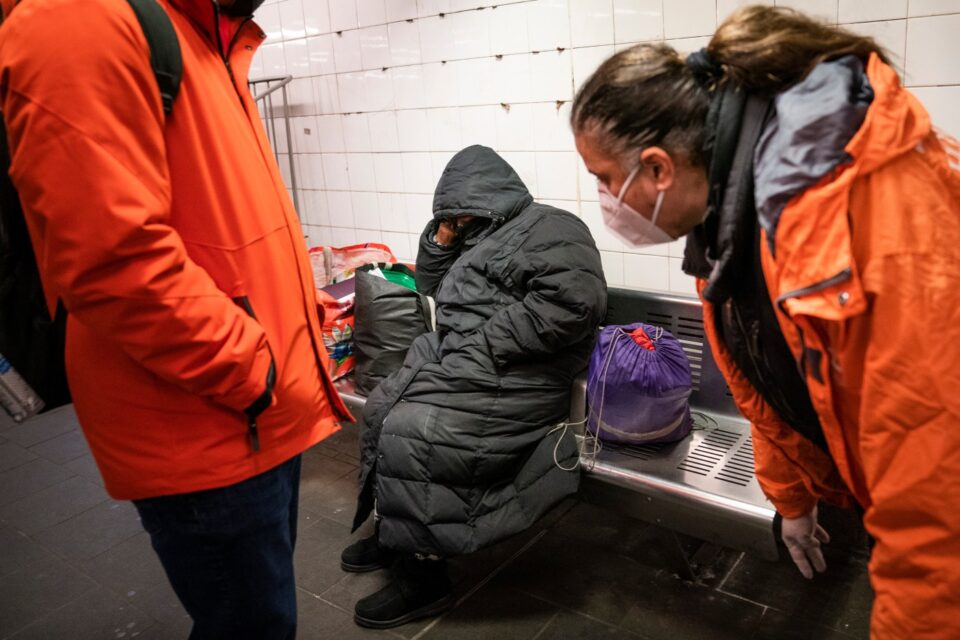
Gov. Hochul and Mayor Adams both made needed commitments in their State and City addresses to support New Yorkers with the most serious mental health challenges. Their focus is urgent and well-placed. But to turn those commitments into real change, we need to act with urgency, strategy, and scale.
I’ve seen what works. Two decades ago, I helped lead New York City’s effort that resulted in a 40% reduction of street homelessness among people with the most serious mental health issues.
The governor proposed, and the mayor supports, improvements to involuntarily hospitalization for people in serious distress. It’s a controversial topic because it infringes on people’s personal rights. But having seen the very urgent struggles faced by individuals, it can be an effective tool if it is used as a last resort intervention and executed in tandem with the person’s clinical care team, with a focus on thoughtful discharging planning to housing with wraparound services.
The governor’s planned expansion for Assisted Outpatient Treatment, or Kendra’s Law as it is more commonly known, will also position us to have the tools to provide needed support to people who might otherwise not access help.
But the most critical solution is investment in effective services that work. We need to flood the system with expanded services.
Hochul is proposing expanding SOS teams. The mayor proposed expanding Safe Havens. Both offer support to people experiencing street homelessness and concurrent behavioral health challenges. Safe Havens are a big part of how we reduced street homelessness by 40% 15 years ago.
Adams’ proposed adding 900 new Safe Haven units to help people transition off the streets. But here’s the challenge: if we roll out units slowly, we will fail to meet the moment. Bringing all 900 units online simultaneously would create a visible and immediate difference — restoring dignity to countless lives, while clearing subway cars, streets and church steps.
While the governor and mayor appear to be making substantial investments, and have made investments in the past few years, they have not been enough, as almost any New Yorker will tell you.
We’ve seen the success of programs like Intensive Mobile Treatment (IMT) and Assertive Community Treatment, which provide round-the-clock support for individuals with the most serious, complex needs who have been failed by every other system.
At my organization, ICL, 75% of clients served by IMT have become stably housed by our teams and 67% are adherent with medication, with an additional 14% agreeing to try medication. This program is the gold standard for the highest need people living on the streets and, while the mayor has expanded it in past years, it is conspicuously missing from his current plan. The waitlist for these programs exceeds 1,000 individuals, many with decades of suffering. Scaling programs like IMT is critical to our success.
We also need to fill out the continuum to address people’s needs as they change. For example, ICL launched Step-down Treatment Ensures Personal Success (STEPS) to support individuals ready to transition out of IMT and Assertive Community Treatment (ACT) programs.
Before STEPS, there was no other program for them to go to, so they stayed on the IMT and ACT roles, despite not needing that high level of service. In its first year, STEPS kept 98% of participants housed, on medication, and out of hospitals. By freeing up IMT and ACT spots, we reduced their waitlists by 5%. But philanthropy alone can’t sustain this model. For STEPS to expand and become a permanent part of the mental health continuum, government investment is critical.
We also need solutions further upstream. Neither plan includes proposals to address the needs of those just beginning to experience life-altering issues. By the time an individual needs IMT, ACT, AOT and other similar programs, they have likely spent decades untreated.
One successful state program is OnTrack, which provides intensive intervention for people experiencing their first episode of psychosis. Data shows that if we intervene early, we can prevent people from experiencing repeat hospitalizations, incarcerations, and homelessness. We need to see investments upstream to stem the tide of people winding up with the most acute challenges.
The governor and mayor have demonstrated their commitment, but we need to do more. We need a full continuum of care that meets people where they are — whether it’s on the street, in a hospital, or on the brink of independence. Then we will ensure that every New Yorker with serious mental health challenges can find stability and success.
Rudin is president and CEO of the Institute for Community Living (ICL).
